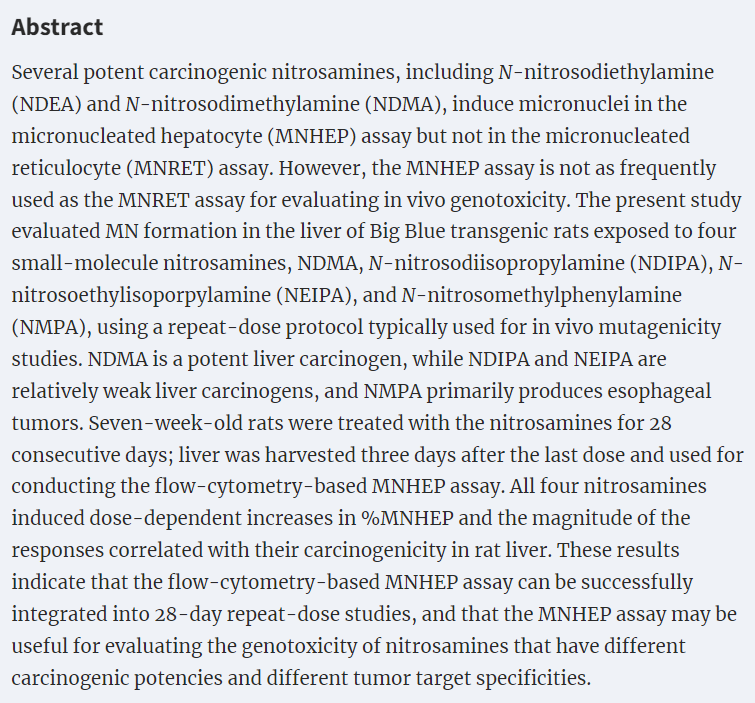Moving well outside of my comfort zone in knowledge or understanding, this might be something for those with greater knowledge to comment upon - from the abstract it looks like it is possible to assess the potency of different nitrosamines with this technique.
The flow-cytometry-based MNHEP assay (resolving the historic issues with in vivo micronucleus testing for (small) nitrosamines) is not per se suggested as a standalone test, but for integration in the in vivo TGR mutagenicity assay (based on OECD488) as additional MNHEP endpoint (no OECD guidance):
“In summary, the present study demonstrated that the flow-cytometry-based MNHEP assay can be integrated into a 28-day repeat-dose mutagenicity study, facilitating a 3Rs study design to reduce the use of animals and resources.”
Idea being that we don’t know a lot about NDSRIs and might as well maximize the endpoints:
“Currently, there is a significant lack of carcinogenicity data for nitrosamine drug substance-related impurities (NDSRIs), nitrosamine impurities that share structural similarity to the active pharmaceutical ingredient (FDA 2023). Additional genotoxicity endpoints that provide information on a range of potential mechanisms leading to carcinogenicity, may aid in evaluating the carcinogenic potential of nitrosamine impurities and NDSRIs. Our results show the potential for doing this using an integrated, relatively short-term 28-day rodent study.”
In addition to this MNHEP assay, the FDA scientists also recognize the Comet assay for measuring DNA damage or error-corrected next generation sequencing (ecNGS) for mutagenesis complementary to the TGR gene mutation assay. Including the announcement that a manuscript on these other endpoints is coming.
It is not clear how regulatory guidance will evolve in this area, and if multiple endpoints will have to be integrated when moving to in vivo studies (lack of OECD protocols can be a hurdle, though it is rather complementary) or if first the correlations will be investigated further. Similar with ecNGS, flow-cytometry-based MNHEP assay (developed in 2018) doesn’t have an OECD protocol yet (adding to the discussions science-based vs. standard protocol GMP studies for investing nitrosamine potency).
But companies doing in vivo studies in the rat can integrate it in principle easily:
“The MNHEP assay requires only a small amount of liver tissue (< 1 g), so that the remaining tissue can be used for histopathological examination or for other genotoxicity endpoints such as the comet assay for measuring DNA damage or the TGR gene mutation assay or error-corrected next generation sequencing (ecNGS) for mutagenesis.”
